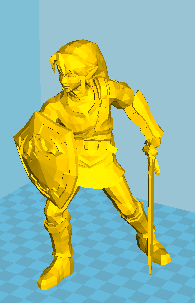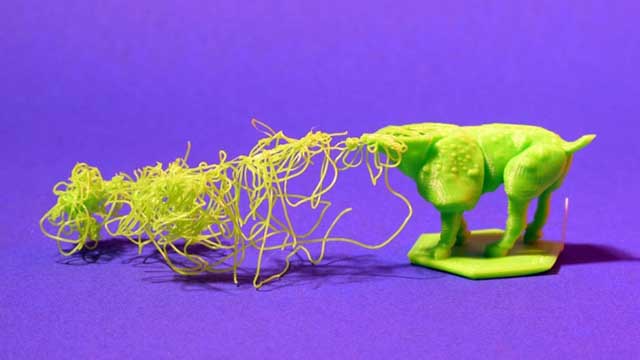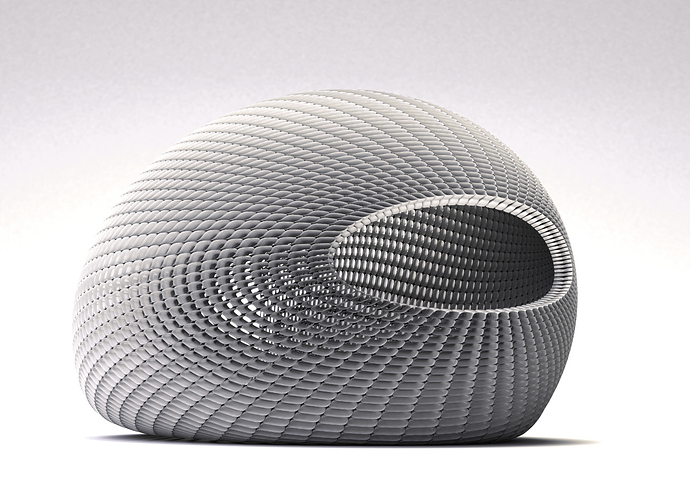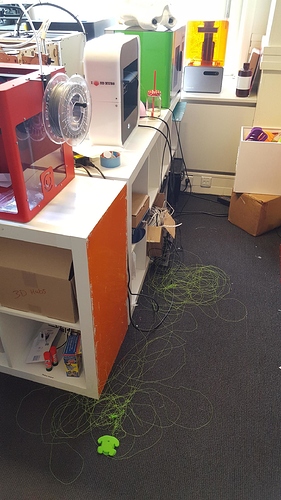3D Hubs caters towards a wide range of customers. With 3D Printing being a fairly new technology, many customers are not aware of the potential limitations of 3D Printing and the models uploaded often reflect this. I have seen my fair share of spaghetti models and crazy post-modern futuristic buildings designs. While the designs look cool, actually getting them printed is a very different story. What’s the best course of action when there are some questions when it comes to the printability of a model? Of course, it depends on the type of printing technique you use, the main focus of this post is printing with the General Purpose Plastics material group (GPP).
Not printable
Impossible to have good results with GPP due to the large amount of empty space which needs to be filled with support material. / Source: cadgrup.com 7
It’s printed actually… But not with GPP! Lots of overhang and complex design which makes it impossible to print with GPP. This print is done with the strong & flexible nylon material group.
There is a very small chance of success with these sorts of models.
What to do?
Recommend an alternative technology. If there are a significant amount of overhangs, SLS may be the easiest printing technique for the model. Also SLA can handle higher resolution and design complexity.
Alternatively you can offer design help if you have the expertise. Some models just require only quick fixes to make it printable. You can add design as a service fee if you discuss this with your customer beforehand.
Borderline Designs
It’s printed with GPP… But as you can see, it’s definitely not perfect! The bottom side of the ears have some bumps on it, due to the overhang.

Link from The Legend of Zelda! Pretty cool figurine, huh? It’s printable with GPP, however, it’s gonna be as big of a challenge as finishing Ocarina of Time ![]()
Sometimes designs will come in that are almost 3D printable. These designs above are printable, but there are a few problem areas that make it very difficult for an FDM printer. For example, the ears on Yoda or the Sword from Link that has significant overhangs. If you are up for a challenge, you can accept the order, but first you need to get a better understanding of a a few things from your customer.
Timeline
If you’re facing a challenging print for the type of printer you are working with, reprinting a couple times to get the right results might be a necessity. If the customer is on a short timeline, communicate that the print may take extra time due to it’s complexity. If the timeline is too short for you to get a good result, it’s best to decline the order and recommend another 3D printing technique
Expectations
Often times a customer understands that 3D Printing is a difficult process and that their design is challenging - they just want something tangible to work through their next design phase. If this is the case, just communicate that you’re willing to attempt the print but it is a challenge and may not come out perfect.
Getting an understanding of timeline and expectations before payment happens will go a long way. All in all, the key to a successful order is communication. 3D printing is a new technology for most people and for many customers a 3D Hubs order is one of their is their first exposures to 3D printing. Let’s make sure it’s a great experience for both you and your customer!
We don’t want to see those fails no more!


created
Mar '16last reply
Mar '16- 3
replies
- 2.3k
views
- 3
users
- 5
likes
- 1
link

